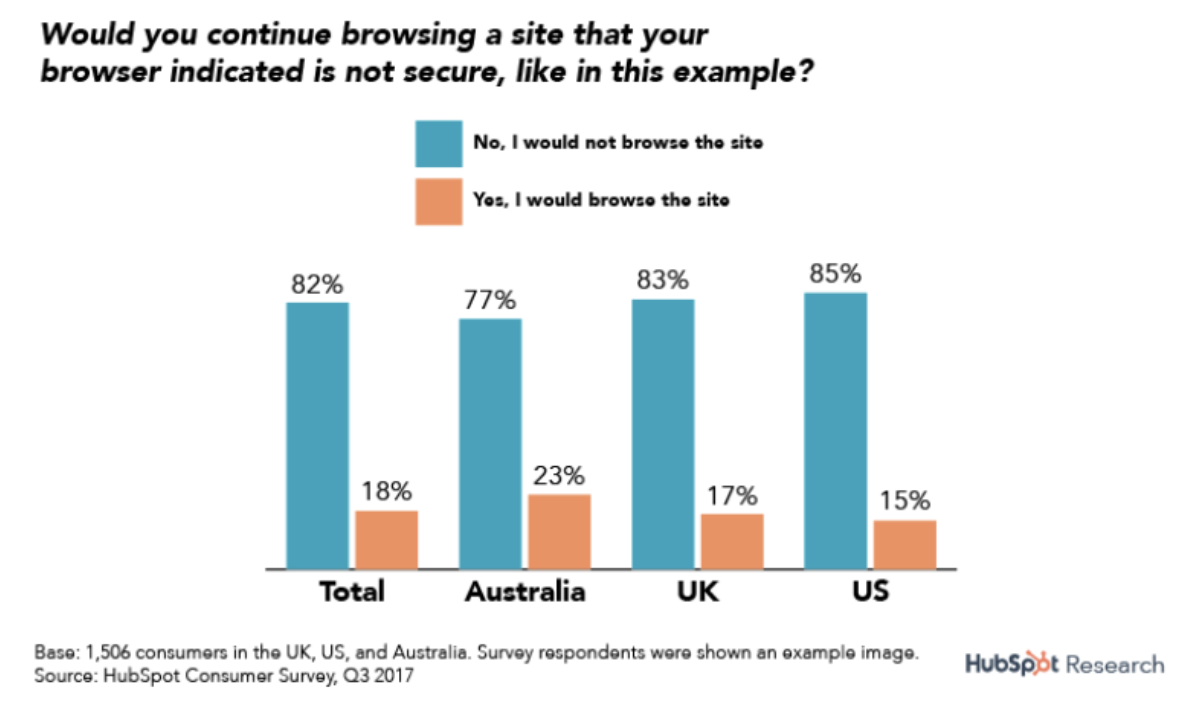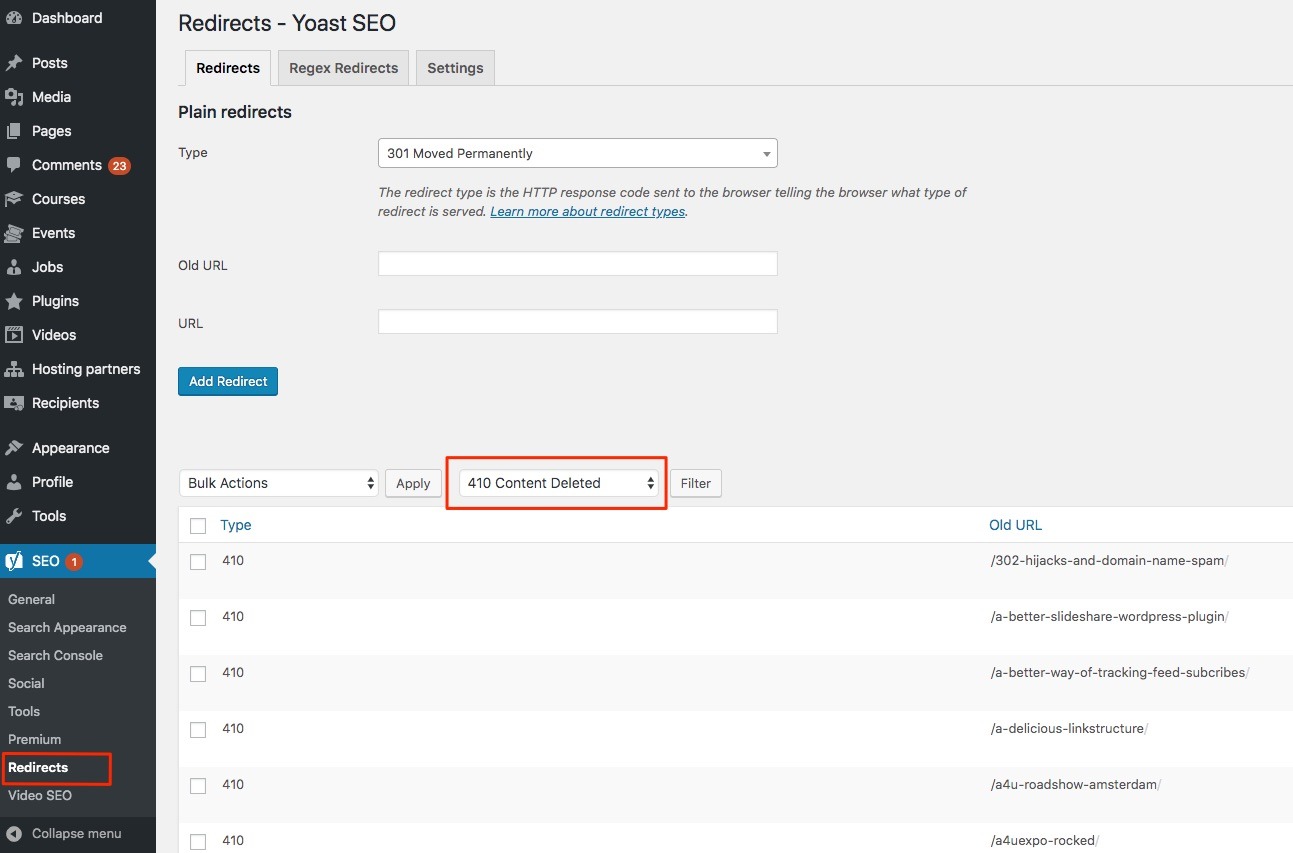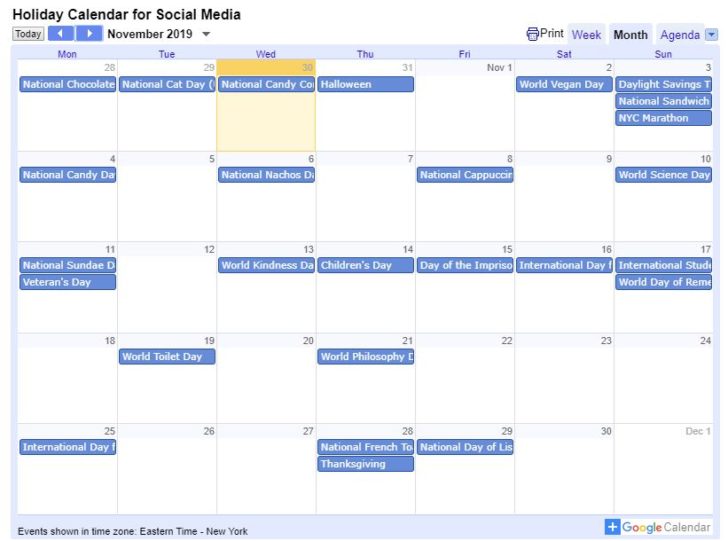
NSO Group spyware on WhatsApp was allegedly used to track government officials from at least 20 countries on 5 continents around the world.Read More
from Social – VentureBeat https://ift.tt/2piN6nD

A few years ago I started a website and to my delight, the SEO efforts I was making to grow it were yielding results. However, one day I checked my rankings, and got the shock of my life. It had fallen, and badly.
I was doing my SEO right and I felt that was enough, but I didn’t know there was more. I hadn’t paid attention to my website security, and I didn’t even know that it mattered when it comes to Google and its ranking factors. Also, there were other security concerns I wasn’t paying attention to. As far as I was concerned back then, it didn’t matter since I had good content.
Obviously I was wrong, and I now know that if you really want to rank higher and increasing your site’s search traffic, then you need to understand that there is more to it than just building links and churning out more content. Understanding Google’s algorithm and it’s ranking factors are crucial.
Currently, Google has over 200 ranking factors they consider when they want to determine where to rank a site. And as expected, one of them is about how protected your site is. According to them, website security is a top priority, and they make a lot of investments all geared towards enduring that all their services, including Gmail and Google Drive, use top-notch security and other privacy tools by default all in a bid to make the internet a safer place generally.
Unfortunately, I was uninformed about these factors until my rankings started dropping. Below are four things you can do to protect your site.
On average, a typical small business website gets attacked 44 times each day, and software “bots” attack these sites more than 150 million times every week. And this is for both WordPress sites and even for non-WordPress websites.
Malware security breaches can lead to hackers stealing your data, data loss, or it could even make you lose access to your website. And in some cases, it can deface your website and that will not just spoil your brand reputation, it will also affect your SEO rankings.
To prevent that from happening, enhance your website security with WordPress plugins. These plugins will not just block off the brute force and malware attacks, they will harden WordPress security for your site, thus addressing the security vulnerabilities for each platform and countering all other hack attempts that could pose a threat to your website.
As much as it is very tempting to use a password you can easily remember, don’t. Surprisingly, the most common password for most people is still 123456. You can’t afford to take such risks.
Make the effort to generate a secure password. The rule is to mix up letters, numbers, and special characters, and to make it long. And this is not just for you. Ensure that all those who have access to your website are held to the same high standard that you hold yourself.
As much as using a content management system (CMS) comes with a lot of benefits, it also has attendant risks attached. According to this Sucuri report, the presence of vulnerabilities in CMS’s extensible components is the highest cause of website infections. This is because the codes used in these tools are easily accessible owing to the fact that they are usually created as open-source software programs. That means hackers can access them too.
To protect your website, make sure your plugins, CMS, and apps are all updated regularly.

If you pay attention, you will notice that some URLs begin with “https://” while others start with “http://”. You may have likely noticed that when you needed to make an online payment. The big question is what does the “s” mean and where did it come from?
To explain it in very simple terms, that extra “s” is a way of showing that the connection you have with that website is encrypted and secure. That means that any data you input on that website is safe. That little “s” represents a technology known as SSL.
Following Google’s Chrome update in 2017, sites that have “FORMS” but have no SSL certificate are marked as insecure. The SSL certificate, “Secure Sockets Layer” is the technology that encrypts the link between a browser and a web server, protects the site from hackers, and also makes sure that all the data that gets passed between a browser and a web server remains private.

A normal website comes with a locked key in the URL bar, but sites without SSL certificates, on the other hand, have the tag “Not Secure”. This applies to any website that has any form.
According to research carried out by Hubspot, 82% of those that responded to a consumer survey stated that they would leave a website that is not secure. And since Google chrome already holds about 67% out of the whole market share, that is a lot of traffic to lose.

Technically, the major benefit of having Hypertext Transfer Protocol Secure (HTTPS) instead of Hypertext Transfer Protocol (HTTP) is that it gives users a more secure connection that they can use to share personal data with you. This adds an additional layer of security which becomes important especially if you are accepting any form of payment on your site.
To move from HTTP to HTTPS you have to get an SSL certificate (Secure Socket Layer certificate) installed on your website.
Once you get your SSL certificate installed successfully on a web server and configured, Google Chrome will show a green light. It will then act as a padlock by providing a secure connection between the browser and the webserver. For you, what this means is that even if a hacker is able to intercept your data, it will be impossible for them to decrypt it.
Security may have a minor direct effect on your website ranking, but it affects your website in so many indirect ways. It may mean paying a little price, but in the end, the effort is worth it.
The post Why website security affects SEO rankings (and what you can do about it) appeared first on Search Engine Watch.
So you’ve spent the last few weeks whiteboarding, workshopping and brainstorming your next presentation. Maybe you’re sharing findings from a specific analysis to your client(s). Maybe you’re reporting last quarter’s performance to your leadership team. Or maybe you’re running a planning meeting with your team to align on goals and strategic planning for the next fiscal year.…
The post 8 Public Speaking Tips and Tricks to Crush Your Next Presentation appeared first on Seer Interactive.
It may be one of Yoast SEO’s lesser-known features: SEO roles. A site admin can determine in the backend of WordPress who gets access to the various settings and features of Yoast SEO. This makes for a more fluid and flexible access protocol for different kinds of users on a site. It is no longer a one-size-fits-all solution, but a more tailored one. SEO roles make Yoast SEO even more powerful for every type of user. Here, we’ll explain why these roles are so awesome.
It used to be quite the challenge to use Yoast SEO in a larger site environment. As an admin, you’d have to choose between offering users full access to the plugin or just access to the SEO post editor part. That means a regular user couldn’t use the redirect manager, for instance, and had to ask an admin for help every time he or she wanted to add, change or delete redirects. We’ve seen it happing here at Yoast as well. Of course, there’s a whole range of possible permissions in between. Yoast SEO provides the option for two roles that make this a lot easier to manage: the SEO manager and SEO editor, in addition to the admin who determines who gets to see what.
Roles in Yoast SEO consist of one or more capabilities, like:
The SEO editor, for instance, can now make redirects, but cannot change the settings of the plugin or access the advanced metadata editor of Yoast SEO. This way, the SEO editor has more access than a regular user, but less than the SEO manager who can manage settings as well. If you use a permission or role manager plugin for WordPress like Justin Tadlock’s excellent Members plugin, you get even more fine-grained control over the capabilities within Yoast SEO. This way, you can mix and match capabilities in any form you’d like.
In Yoast SEO Premium, we’ve also added the capability to manage redirects without having to be an administrator. By activating this, users within a specific role get full access to the redirect manager. No longer do site managers have to be swamped with redirects requests by site editors, they can manage those themselves. Personally, I like that a lot. By adding some magic code to the plugin, the redirect manager now shows up in the WordPress sidebar menu, even if your Yoast SEO menu is hidden by default. How cool is that?!

The SEO roles in Yoast SEO make it incredibly easy to give more people working on your site access to the features and settings they need, without granting them full access. Does your site editor need to edit advanced metadata? No? Block it in Yoast SEO. Does he or she need to manage redirects and do large-scale SEO optimizations with the bulk editor? Great, grant him or her access to these parts of the plugin. You can do this and more – all from the admin dashboard of Yoast SEO!
Read more: Yoast SEO 5.5: Introducing SEO roles »
The post Managing access to Yoast SEO with SEO roles appeared first on Yoast.
As a multitude of WordPress developers, designers, users, owners, and fans currently descend upon St. Louis, Missouri for WordCamp US 2019 (WCUS) this weekend, those WebDevStudios (WDS) team members who are staying behind will be using their workday tomorrow, Friday, November 1, 2019, to join their WCUS-attending teammates in spirit by contributing to Five for the Future, a WordPress initiative designed to motivate WordPress companies to donate 5% of their time to giving back to the core and community. Whether we’re organizing or speaking at WordCamps, presenting a talk at a WordPress meetup, or participating in Five for the Future (#5ftf), WDS is always giving back.

“I think it’s awesome that WDS allows its employees an entire day to give back,” says Jessica Lujan, WDS Project Manager, who recently experienced her very first #5ftf Day on October 4th. “It really goes to show that they’re invested in WordPress and want to see it continue to succeed.”
Like many WordPress site owners or users, Jessica doesn’t code. However, she doesn’t let that stop her from participating in this pay-it-forward event. When given the opportunity to join in, she was hesitant, but then she heard that she could help out the WordPress community by captioning a video.
“I have so much appreciation for the folks that create the captioning content. It was cool to learn the tools and systems in order to create that, and I feel like I learned a lot!” exclaims Jessica. She also adds, “I will be honest; it was a little harder than I thought it would be. You have to be really focused on it, otherwise you’ll realize you missed an entire sentence or two and have to rewind. The tools they suggest to use are super easy to use, so that was a relief. It was definitely rewarding to watch it back and see all the content I helped contribute.” [Editor’s note: it was my own WordCamp talk that Jessica captioned, so I can’t help but be biased. See Jessica’s captioning work here.]
Jessica’s enthusiasm and effort just goes to prove that you don’t have to code to contribute. Are you interested in learning about other ways you can participate in #5ftf alongside with us? Read this blog post.
Below, take a look at a sample of WDS’ contributions from our last Five for the Future. From tweets to likes to shout-outs, we get lots of support from the community. We can’t thank you enough for noticing our motivation and work. As always, keep up with our #5ftf efforts by following the hashtag on Twitter.
My workspace is begging to be an I Spy game 🙈 Today is very special because not only do I get to give back to the community #5FTF but I also get to do it on my birthday. #WCAsia2020 is in 4months! See you all there! @webdevstudios pic.twitter.com/dkEqyjQNVB
— JC Mae Palmes (@jpalmes) October 4, 2019
Today is #5FTF at @webdevstudios and I’m playing the role of Accountant in doing paperwork for WordCamp Ottawa!
Curious about the mundane process of submitting invoices and expense reports for a #WordCamp?
Ask away!
— meagan hanes @ WCUS (@mhanes) October 4, 2019
It’s #5ftf day at @webdevstudios! I’m continuing work on my Board Game Collector plugin, adding in a React-based settings page to run game collection imports inside the dashboard!
— Jeremy Ward is corrigible. (@_jmichaelward) October 4, 2019
To quote TOTO “Time passes quickly and chances are few”. It’s been a month! It’s time for #5ftf at @WebDevStudios AGAIN 🥳 😍 which means helping out the WordPress community in some meaningful way. I’ll be helping improve our Gatsby based theme, and helping folks in the WP forum.
— Marty O’Connor (@martinjdolan) October 4, 2019
Day 35 of #100DaysOfCode, I’m working on #5ftf @webdevstudios. Today’s focus will be on getting these color swatches to compare and contrast values for contrast improvement tips. I’ve never done this before so it will be a learning experience. pic.twitter.com/MgdoN2zdWM
— Mike England (@mikelikethebike) October 4, 2019
Today is #5FTF @ @webdevstudios allowing me the opportunity to provide automatic contact to existing church websites!
— Scott Anderson (@thriftydev) October 4, 2019
Today is #5ftf day @webdevstudios. I am contributing to the “WP Search with Algolia” plugin. https://t.co/yv0h3Ta8dy
— Richard Ⓐber (@richaber) October 4, 2019
Getting WP-Strava 2.0 ready to release today. It has support for refresh auth tokens which are mandatory after 10/15/2019 – *Justin* Time 😉 Big thanks to @webdevstudios for time to do this via #5FTF
— Justin Fœll (@justinfoell) October 4, 2019
It’s time to rock another #5ftf @maintainn and @WebDevStudios. First up, WCUS slides for workshop about Contributor Day. Did you know EVERYONE has something worthwhile to contribute? Don’t believe me? Let’s talk 🙂
— Christina Workman going to WCUS Contributor Day! (@AmethystAnswers) October 4, 2019
Soon! #5ftf pic.twitter.com/Oz3LHnGiDr
— Chrispian H. Burks (@chrispian) October 4, 2019
It’s #5FTF day @webdevstudios and I’m working on getting our new coding standards setup on https://t.co/FDLXKWvZpR and https://t.co/WNA1CuLhnL for beta testing! pic.twitter.com/z8rqR3TRDG
— Aubrey Portwood (@aubreypwd) October 4, 2019
Today on my first #5ftf I will dedicate my day on my Workshop for the kids at the CETAV – Parque La Libertad #givingback @gatsbyjs @WordPress
— el.puas() (@3LPU4S) October 4, 2019
I’ll be spending time organizing volunteers for WCUS this October #5FTF https://t.co/PqQZjAhis1 pic.twitter.com/5i7qbOP9uZ
— Cristina Holt (@cristinaholt416) October 4, 2019
Wrapping up today’s @webdevstudios #5ftf work on my OOPS-generators scripts, to make working with @_jmichaelward‘s OOPS-WP library as easy as `composer oopsgen — cpt Thing`! Work in progress: https://t.co/SyHOiGTPTY
— Evan Hildreth (@oddevan) October 4, 2019
The post Five for the Future: It’s Happening Tomorrow! appeared first on WebDevStudios.
A carefully planned content marketing strategy contains several key ingredients including an understanding of who you’re creating content for (e.g., your persona or personas), how your content will help them, and some key performance indicators to measure success.
However, even the most thoughtful and well-planned content strategy can run into roadblocks without a detailed editorial plan. The editorial plan should include what categories and topics you plan to write about, how you intend to amplify your content (e.g., social media, email, etc.) and—the most important bit of all—a list of relevant, highly engaging ideas that incorporates a balance of evergreen and time-sensitive content.
Event-specific content can be challenging to create with any consistency, but with some planning and foresight, it is possible to plan out your editorial calendar in advance. One way to do this is to align some of your topics with seasonal holidays, observance days, and themes.

At CommonMind, we’ve compiled a holiday planner specifically aimed at social media content planning. It contains more than 300 holidays bucketed in three categories as follows:
Since a long list of every conceivable holiday can seem a bit daunting to wrap your brain around, we’ve also created an embedded Google calendar that can be viewed in weekly or monthly increments or printed.

November 2019 Holiday Calendar – Source: CommonMind
When people think of the holiday season, it tends to mean the period of time between Thanksgiving and New Year’s (although it’s been creeping up in the calendar to incorporate Halloween as well). But holiday content planning isn’t just for retailers or companies whose business ebbs and flows depending on the season. Here are a few examples of how some lesser-known holidays and observed days can inspire great content.
World Vegan Day (November 2, 2019): This is relevant to a variety of businesses in the health and wellness industry. Here are a few examples:
World Kindness Day (November 13, 2019)
National Hot Cocoa Day (December 13, 2019)
As you can see, becoming familiar with nonstandard holidays as well as observance days can help spur creative ideas for content that’s relevant to a variety of businesses and industries (you don’t have to sell cocoa to take advantage of National Hot Cocoa Day).
Our Google Holiday Calendar is a great way to familiarize yourself with upcoming holidays and can be imported into your own calendar for easy reference. Since this may be overwhelming, you can also peruse the long list of holidays to begin brainstorming and filling out your editorial calendar for the rest of 2019 and into 2020.
Happy content planning!
Jacqueline Dooley is Director of Digital Strategy for CommonMind.
The post Pre-made calendar with over 300 holidays to help plan editorial content appeared first on Search Engine Watch.
Here is a list of product releases and updates for late-October from companies that offer services to online merchants. There are updates on voice-commerce, expense management, payments, small business loans, shipping, and returns.
The post Ecommerce Product Releases: October 31, 2019 appeared first on Practical Ecommerce.
Do you view numbers as something akin to Frankenstein’s monster? To get over the fear, you need an “exercism” – this five-step workout will train your writing muscles to wrest all benefits from numbers. Continue reading →
The post 5 Writing Tricks to Treat Your Audiences appeared first on Content Marketing Institute.
Since 2005 we've published articles, seminars, and podcasts to help ecommerce merchants. What follows are the 10 most popular articles that we published in October 2019. Articles published earlier in the month are more likely to make the list than later ones.
The post October 2019 Top 10: Our Most Popular Posts appeared first on Practical Ecommerce.
If you’re like me, you say “please” and “thank you” automatically.
You’ve been saying these magic words since you were a kid. Because you were strongly motivated. Forget your manners, and you’d be humiliated in front of your family or strangers. Refuse altogether, and you’d be denied the obscure object of desire.
“What do we say?” “Pweese.” Boom—the chunky monkey is yours!
For today’s marketers, the problem with habitual politeness is that the delivery of a thank you message should never be a reflex. If a “thank you” rings hollow, the response from your customers will be equally rote.
“Thank You.” “You’re Welcome.” End of conversation.
See the problem here?
A thank you page is not the end of the transaction. It’s the next step in keeping people engaged with your brand or product, generating continued goodwill, further qualifying your leads—or even increasing order values or making more sales.
When it comes to your digital campaigns, how you say thank you should be an essential cornerstone of your post-conversion strategy. So let’s talk about a few ways you can approach creating better thank you pages. Along the way, we’ll explore some very effective thank you page examples created by Unbounce customers.
| 1. Invite ‘Em for a Specific, Strategic Call | 4. Win Them Over First, Then Make A Second Ask |
| 2. Reveal the Next Steps | 5. Keep ‘Em Engaged With Your Site |
| 3. Reinforce Your Brand Personality |
The example below from Australia’s Axis Social applies every best practice out there (and then some) to maximize its post-conversion potential:
This isn’t a landing page, though it might look a lot like one at first glance. It’s a thank you page (as opposed to a confirmation box or popup). And that’s why it’s so powerful. It does a lot of what a traditional lead-gen page might do, but it does it after the initial conversion goal has been met.
At this point in the interaction, the team at Axis has already captured the visitor’s email address in exchange for a downloadable Buyer’s Guide. Instead of letting the interaction end there, Axis goes the extra mile to communicate their value as an agency. According to Managing Director Matthew Asimus, this page helped them bridge the gap between a marketing qualified (MQL) and sales qualified (SQL) lead:
We hypothesized that a number of users who engaged with, and converted on, our first MQL landing page would develop an additional level of trust and thus a propensity to ascend from an MQL into an SQL. In essence, we were hoping to move users through a ‘yes cascade’ or ‘yes ladder’ to improve conversion rates.
Our initial results from this MQL ascension approach are incredibly exciting. Despite the campaigns using cold paid traffic from social and requesting 7 form fields, our landing page conversion rates are nearly 30%. What’s more, our lead qualification rates align with our other sales qualified lead generation approaches.
Note just how much persuasive material they’ve included here:
The beauty of this approach is that it also scales to suit visitors without adding more pressure to the experience. If a visitor hits this page but doesn’t want to connect with Axis Social at the moment, there’s nothing here preventing them from clicking away.
But when visitors arrive with questions—or, say, balanced on the fine line between consideration and conversion—this thank you page gives them the extra nudge they need.
Speaking of next steps, if you’ve ever taken an action online—like submitting a form or making a purchase—without receiving any response, you know the existential dread that follows:
Did it… work? What happens next? Should I do it again?
What… am… I… supposed… to… do… now!?
Maybe I’m exaggerating a touch, but it’s always important to let the visitor know about the next steps—especially if clicking your call-to-action isn’t the end of things. Doing so will reduce friction, frustration, and uncertainty. Even if the next step will be yours to take, let people know what you’re doing and when they can expect to hear from you.
For example, notice how Zendrive does it here with a couple of lines:

It’s all clearly communicated. In the headline, they let their B2B prospects know that they’ve successfully completed the “first step.” Then the page sets expectations about what comes next (and when): “You will receive a message shortly with your invite to an executive briefing.”
Finally, it’s also worth taking note of how Zendrive suggests further reading from the site by linking to a piece of content from their blog. Providing a link to a single, valuable piece of content (as opposed to their blog as a whole) helps build trust before the briefing ever begins.
OK, full disclosure: I’m slipping this lil’ bonus tip in here just because it’s a pet peeve of mine.
Have you ever signed up for an ebook, report, or white paper that never seems to find its way to the inbox? It sucks. When this happens, you leave visitors feeling frustrated or even a little ripped off, since they’ve just exchanged your email address for nothing at all.
(I can’t click “unsubscribe” fast enough when this happens.)
What makes it so painful, though, is that there’s a dead-simple way of getting around this issue on your thank you pages:

Unless you’ve got a very special reason you need to deliver a file only via email, provide a download link on the thank you page itself. That way, visitors who’re anxious to start reading (like me) are satisfied. You can still start a drip campaign, of course. But you also eliminate the possibility that your downloadable never makes it to them.
This post features a few thank you pages that will feel a little “aspirational” for small marketing teams (or teams of one) who are short on time and resources. So it’s worth looking at how much gets done in this straightforward example from the fine people at Launchpeer:

It’s personable, playful, and a little quirky. Most importantly, though, it’s thoughtful. As in, it demonstrates thought.
Even if you’ve seen this meme a million times before, this page lets you know that Launchpeer is a brand who, y’know, gets it. (And gets you.) Plus, when you click away, you leave with a pleasant association with the brand.
Tom Hanks is a good choice here too: he’s so darned affable and unlikely to be outed as a serial killer any time soon. I’m speculating, but this quick “t.hanks” from Launchpeer probably didn’t take a heck of a lot of time to create.
You can create your own fun images and animations, but the takeaway here should be that even a small effort leaves a much stronger impression than a generic thank you message. It shows how a humorous gif, playful animation, or unexpected message can generate tons of delight and goodwill.
(Of course, they also promote their podcast in this thank you page. And, again, offer that next step now that their visitor is on a roll engaging with their brand. So a little goes a long way…)
Usually, when a visitor takes a small action, they become more likely to take another, bigger one. That’s why the most effective thank you pages often follow-up with a bigger ask, and why multi-staged forms are usually recommended by CRO specialists and agencies.
Sometimes it helps if the initial action is immediately appealing to your prospects. Take, for example, this contest created for Veeam by Gameplan Marketing:
Leads are captured by offering prizes to IT professionals (like a fitness tracker, a hotel gift card, or Apple AirPods) in exchange for taking a short survey about their current data centers and cloud storage solutions. Like the example from Zendrive above, the thank you page then reminds visitors what they can expect next.
But afterward, this thank you page also makes a second ask. Visitors who’re are (gently) encouraged to sign up to access a free, gated content hub. Since they’ve already provided their info to enter the contest, they’re now more predisposed to do so. Gameplan also includes a sweet explainer video (it appears on the contest page and the thank you page) that briefly outlines the benefits of their cloud-based data-management product.
One thing that most of these examples have in common is that they lead visitors back to the website or prompt another piece of content. You can take this even further, though.
For the launch of Unbounce’s Ultimate Ecommerce Landing Page Lookbook, for instance, the team created a landing page where visitors can grab it.
Here’s what the landing page for this guide looks like:
Eye-catching, right? And if it helps convince visitors that this lookbook is worth the download, then call it a success. It’s an awesome resource for any marketer looking for inspiration, so it’s not a tough sell.
However, we’ve also got plenty more content and resources to offer our ecomm visitors, including material further down the funnel. And we’d love to keep visitors coming back for it.
That’s why the thank you page is so crucial here. We want to keep the conversation going, so we use a thank you page to ask visitors another quick question on the way out. Depending on what visitors choose, they’ll be directed to additional resources.
I’ve included a screenshot of this choose-your-own-adventure flow below:
The answer that readers provide to this general question (i.e., “What’s the biggest challenge you face as a marketer?”) does three things:
So a single thank you page can become a source of marketing insight, an engagement driver, and a lead qualifier. All this happens by asking a single additional question at the right moment.
Curious about the Unbounce ecommerce lookbook? Take a look at the whole flow here. (Yes, we’ll need your email. Tell ‘em Colin sent ya.) While you’re at it, download it for your landing page swipe file.
I find a real-world analogy enlightening here: imagine if brick-and-mortar retailers were to escort you to the exit and lock the door each time you make a purchase.
That’d be crazy, right?
So why do it on your landing pages?
Unfortunately, smart uses of thank you pages like these ones from our customers are the exception, not the rule. Frankly, a lot of examples out there look more like this bland form confirmation box, typo and all:

A thank you page shouldn’t be a hard stop, and if that’s the habit you’ve gotten into, consider breaking it.
Thank you pages are super versatile. You can use them with subscriptions, downloads, webinar registrations, shopping carts, quote requests, demo signups, and contact forms. They can be used for upselling (or cross-selling), for offering discounts, for encouraging referrals, for soliciting feedback and testimonials, or for generating social shares. Holy moly.
Whether you’re selling something or generating leads, saying “thank you” in an unexpected and meaningful way is an opportunity to make a lasting impression. And, when incorporated into a thoughtful post-conversion strategy, it can boost your revenue too.
To close, here are three big points worth remembering if you’re trying to make a case for spending more time on your thank you pages:
So if you’re already designing landing pages, make saying “thank you” as much a part of the process as your headline, form, and call to action.
And, hey, thanks for reading.


Black Friday is less than a month away. Are your promotional emails ready?
Implementing an effective holiday email marketing strategy can help drive ecommerce and online sales, increase charity donations, or get your subscribers directly to your store.
But don’t wait until the last second to get started on your emails: Winter holidays are the top consumer spending events of the year, according to the National Retail Federation, and some businesses are already sending holiday emails.
That’s why I’m hosting a Facebook Live on November 5, 2019 at 1 p.m. ET on AWeber’s customer community page. Tune in to learn how to:
And more!
Watch on November 5th. Even if you can’t stream it in real time, you can always catch it later. The video will stay up on AWeber's Facebook customer community page.
Not an AWeber customer yet? To catch more Live videos from our email experts, sign up for a free trial of AWeber and join our private Facebook community. (Only AWeber customers can join!)
The post The Top Holiday Email Marketing Tips of 2019 appeared first on Email Marketing Tips.

Beaver Builder has been a member of the original big three of the page builder space ever since the very beginning. It’s about time we do it justice in this Beaver Builder review! We’ll be looking into the things that make Beaver Builder a viable solution, its pros and cons, pricing, ease of use, the... View Article
The post Beaver Builder Review: The Best Content Builder Around? Truth or Hype? appeared first on WinningWP.
Few technologies have sparked as much debate, held more promise or terrified more people than artificial intelligence (AI). Depending on who is talking, AI promises to usher in a new technological era or precipitate the demise of humanity.
Notable individuals such as Mark Zuckerberg, Ray Kurzweil and Sam Altman have been strong proponents of AI development, even going so far as to believe the potential benefits create a moral imperative to pursue AI research. Others, such as Elon Musk, Clive Sinclair and the late Stephen Hawking, believe true AI may represent the greatest existential danger to the human race.
With so much controversy, governments are getting drug into the middle of the debate, trying to navigate what role they should play in regulating AI, with Germany the latest to wade in on the topic. In 2018, the German government formed the Data Ethics Commission to “develop ethical benchmarks and guidelines as well as specific recommendations for action, aiming at protecting the individual, preserving social cohesion, and safeguarding and promoting prosperity in the information age.”
Last week the commission released an opinion on AI development, recommending more regulation and government involvement.
“The Data Ethics Commission holds the view that regulation is necessary, and cannot be replaced by ethical principles. This is particularly true for issues with heightened implications for fundamental rights that require the central decisions to be made by the democratically elected legislator. Regulation is also an essential basis for building a system where citizens, companies and institutions can trust that the transformation of society will be guided by ethical principles.”
AI proponents and tech experts are already speaking about against the commission’s findings, voicing concern that the focus on regulation will stifle innovation.
“Europe wants to be more competitive in the digital economy,” wrote Eline Chivot, a senior policy analyst at the Center for Data Innovation in Brussels. “But it cannot substitute regulation for innovation. Rather than trying to achieve competitiveness in AI through policies designed to disadvantage foreign providers and promote European digital sovereignty, European policymakers should instead focus on developing an AI strategy that invests in people, data, and digital infrastructure, and creates a more innovation-friendly regulatory environment, so that European firms can better compete with China and the United States.”
One thing is certain: The debate about AI, its future and the best way to safely develop the technology is far from over.
The post German Commission Recommends Tighter Regulation of AI Development appeared first on WebProNews.
Google rolled out another algorithm update that is expected to impact 10% of all search queries. This is the biggest change to Google’s algorithm in ~5 years (RankBrain). The purpose of this algorithm update is to better understand natural language in search, intended to deliver better search results.…
The post What You Need to Know About BERT appeared first on Seer Interactive.

The changes in 2020 will create just enough anxiety in digital marketers to keep the coffee and libations industries booming. AI will continue to grow and impact how we interact with our audiences and understand our own content.
As usual, old trends will slowly fade away and get replaced with new, shiny trends. Yet, the list below isn’t all new trends. In fact, most are things you’ve heard of and may be doing.
In 2020, a lot of familiar best practices will get a facelift, and underutilized tactics and software will become more vital for data-driven decision making.
Obviously, SEO is important, but it’s getting harder and harder every year. Google has a potentially big algorithm change coming in March of 2020 that will reduce the value of guest posts in consideration for search rankings. So, if your SEO strategy is 100% based on guest posting, diversifying will be important to maintain your ranking.
With the value of guest post links potentially waning, content creators will look for other ways to build great inbound links.
One of the best ways to get inbound links is to do original research that is of value to your industry. Original research gives your brand something to share with the industry that is new and exciting. It creates motivation to link because it is based on actual data and will be a talking point in the industry. As a result, original research gets a lot of earned media and social coverage, which helps boost your search rankings.
Many organizations currently rely on original research for their domain’s overall authority and inbound links, but in 2020, more and more will join the fold, especially with online research becoming easier with services like Google’s Marketing Platform.
The days of long-tail keywords are nearly obsolete. Google has revised its algorithm to understand that a lot of similar long-term keywords are actually talking about similar things. The result? Longer form content that speaks at length about a subject gets ranked higher than pithy posts that are focused on extremely specific keyword phrases.
SEO used to be a one-trick pony, with only a single algorithm to figure out. Since Google local began back in 2004, the tides have been shifting. Many industries are seeing this shift, as content that used to rank well nationally is now being overrun by local results, pushing older content down in search rankings.
For example, areas such as franchise SEO now require a blended method of national and local search for their search strategies — things that used to be handled by entirely separate teams at one point.
Understand where your organization should be optimizing for local search vs. national search to avoid losing existing SEO traction and gaining ground on competitors who are not keeping up with this trend.
67% of consumers worldwide used a chatbot for customer support in the past year. Though working with a real human in preferred by most people, the availability and quick answers chatbots provide have made them invaluable in customer support and even lead generation.
67% of consumers worldwide used a chatbot for customer support in the past year.
Click To Tweet
Chatbots can help prospects understand more about your solutions by answering prospects’ direct questions quickly. Getting these quick responses without feeling the pressure of having to talk to sales right away will help drive more “maybe” prospects into solid leads.
It used to be standard practice that short videos were the way to go. But this was mostly because people didn’t want to spend over 90 seconds watching a video that’s just a disguised ad for your organization.
Now, people don’t want to spend ANY time looking at a video that’s an ad for your organization. So, what’s the key to success on YouTube then? Creating content that people actually need and want to watch – GASP!
How do you do create something that your audience needs and wants to watch? These videos need to be educational AND entertaining to have sticking power. Videos with low audience retention get booted pretty quickly from YouTube rankings, while those with high retention are moved up. So, follow YouTube’s lead and favor longer, educational videos (10+ minutes) in your marketing strategy, and you’ll see the results when it comes to search and recommendations.
Now, I know what you’re thinking, “Wait, did he just say 10 or more minutes? Everything out there says the top videos on YouTube are 2-3 minutes!” Correct, they are. Because most of the top videos on YouTube are music videos. But, if you look at the most successful YouTube channels out there, they average between 13 and 14 minutes per video. Your goal is to create a great channel, right? So, go for amazing, longer-form videos that really address your audience’s pain points.
One of the most often underutilized benefits of online display advertising by the majority of companies is a great remarketing campaign. Getting people to your site once is the hard part. Once you get them there, you now have the ability to target them with inexpensive, effective messaging wherever they are online.
It’s relatively low-cost given you only pay for the ad clicks you get, and it is not incredibly hard to do. I see so many companies that have Google Ads set up for PPC search, but don’t have remarketing set up. Also, most marketing automation systems now allow you to remarket to your existing leads based off of what they do on your site. So, if that person who downloaded a white paper 6 months ago momentarily came to your site today, you could have your email system send them a special offer since you’re top of mind for them. If you take these extra steps, you’ll be ahead of the pack in 2020.
It’s robust. It provides value beyond what most people can possibly imagine. And it’s free. Google Analytics is a real gift to the digital marketing universe that is really not used enough.
The main reason it’s not used enough is that it comes across as overly complex. And admittingly, it is. But learning the basics of Google Analytics can help you better understand how people truly use your site and where you have opportunities to make your website more intuitive and useful.
The adage, “I waste 50% of my marketing budget, but I don’t know which 50%” is no longer an excuse.
Understanding the channels and campaigns that truly drive success should be core to a digital marketing strategy. Unfortunately, many organizations don’t pay attention to which campaigns and channels bring traffic in and which get them to actually convert. This inevitably leads to marketing organizations putting dollars and resources into ineffective endeavors.
Attribution modeling helps you understand which channels and campaigns should truly get credit for the conversions that happen on your site. If you’re not familiar with this process, start by checking out the different types of attribution modeling. Once you understand the different types of attribution, you can identify which ones fit best with your business.
For most content marketers, a win happens once a prospect has found content, engaged with it, and converted to a sale or a lead. But what happens next?
Content marketing brings the most value when it supports the entire buyer’s journey, from the top of the funnel, through conversion, through the sale, into supporting that client’s success as a customer, and into elevating them into a cheerleader for your brand. Look at different areas where content can multiply a client’s experience throughout the journey with you. Find them, and make their day.
Google RankBrain is putting more emphasis on click-through rates in search results.
That’s right, it’s not just about creating great content and getting solid backlinks anymore. Now we must get people’s attention on search engine results pages (SERPs) and drive them to click our content instead of the other results. Don’t let this change worry you! We already created a post on increasing search rankings using Google Search Console to help.
The world accesses your marketing from their phone regardless of the business you are in. You are probably already working on making your mobile experience as good as it can be, but what about your desktop experience?
Personally, I’d love to get rid of the term “mobile first” when it comes to design. Mobile and desktop are completely separate user experiences. What works for one will most-likely not work for another. To put the best marketing out there, focus on making an experience that is great on mobile AND on desktop.
For example, it’s easy to scroll on mobile devices, but loading new pages is a huge pain. So don’t shy away from long pages on mobile – just make sure you’re not using huge imagery that takes forever to load.
And on desktop, if you’re using hamburger navigation that’s the same as the mobile site, you’re creating unnecessary customer friction. Don’t make desktop users click to see an abbreviated menu. It can’t be a secret anymore, that’s just bad UX.
If your content talks all about you, you’re going to lose your audience. There’s an unspoken rule in marketing — no one gives a $#!^ about your brand. All they care about is themselves.
When creating content, don’t focus on what YOU can do. Focus on what your customer can do BECAUSE of you. For example, stating that your microphone you sell is “best in class” and “industry leading” isn’t as effective as saying someone who buys the microphone will be able to record incredibly crisp, professional audio without having to shell out big bucks.
How many times have you started to read an article about a topic, only to find out it didn’t answer your actual pain point? Start paying attention, because it probably happens more than you can count.
Our natural reaction is to bounce from the page and back to the search results to find another post on the subject.
It’s not enough to just write content about a specific topic to save your audience from this experience. You need to know what the audience’s actual pain points are that the content needs to address. Below is how to do this.
Using data-driven insights from a content intelligence platform enables you to quickly identify topics your audience truly cares about, their true pain points, the topics they will engage with in the future, and which topics convert to deliver on business goals.
Content intelligence platforms also identify how you stack up against your competition on a topic-by-topic basis, including where you may have existing content gaps that competitors are already exploiting.
As a final cherry on top, these platforms make sure that you can measure your success as you go. This real-time information allows you to course correct and adjust your strategy in a way that will get you to your end goals.
When creating content, it’s important to know not only what you’re creating and what the audience’s pain points are, but also how important the content is to your own site.
Online content can be easily categorized into three buckets:
Pillars are main sections of your site. They are usually part of the main navigation and are essential to the success of your business.
Cornerstones are huge pieces of content that you create to impact your industry. Major research reports, ultimate guides, etc. are all cornerstones. These content pieces represent an A-to-Z journey of how to do or make sense of something and can be thousands of words long.
Bricks are regular-style blog posts and normal videos that are produced on a regular basis. Usually consisting of 600-1,000 words.
Not every brand is cut out for doing live video, but it’s featured prominence on Facebook, Instagram and YouTube make it a great way to stand out from the crowd. Just make sure your brand is right for live video.
Watching live videos from a B2B brands can sometimes be a bit cringeworthy, especially when they are simply live commercials or videos of someone walking through a conference with shaky iPhone video. These videos aren’t overly helpful or entertaining. They’re just cringeworthy. Don’t be cringeworthy.
Engaging with social influencers of all sizes is essential in 2020.
It’s not just about numbers, it’s about hitting the right audiences with the right messages. Sometimes that means engaging with influencers who have very small numbers of followers, but whose followers are highly engaged and see that influencer as a great authority.
Sometimes called “microinfluencers”, these small, yet mighty influencers may have a bigger impact on bottom-line success than the biggest celebrity you could afford.
What do you think?
Just keeping up with a couple of these trends should significantly help your 2020 efforts.
The post 18 Marketing Tactics You Need in 2020 appeared first on Convince and Convert: Social Media Consulting and Content Marketing Consulting.